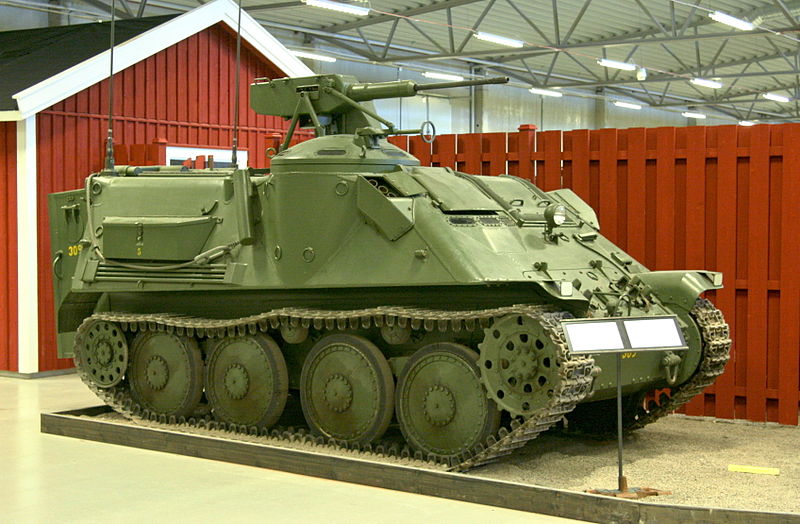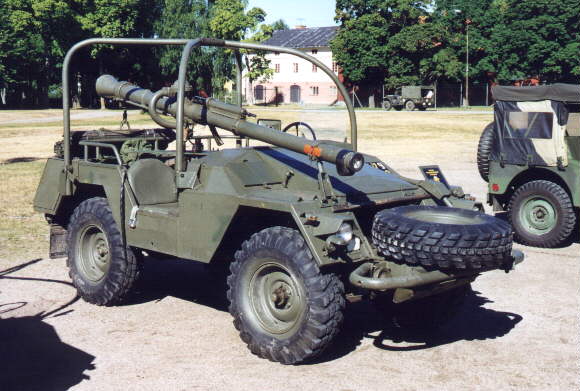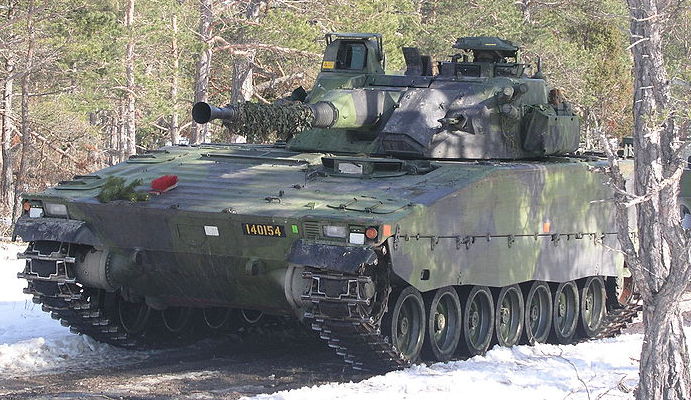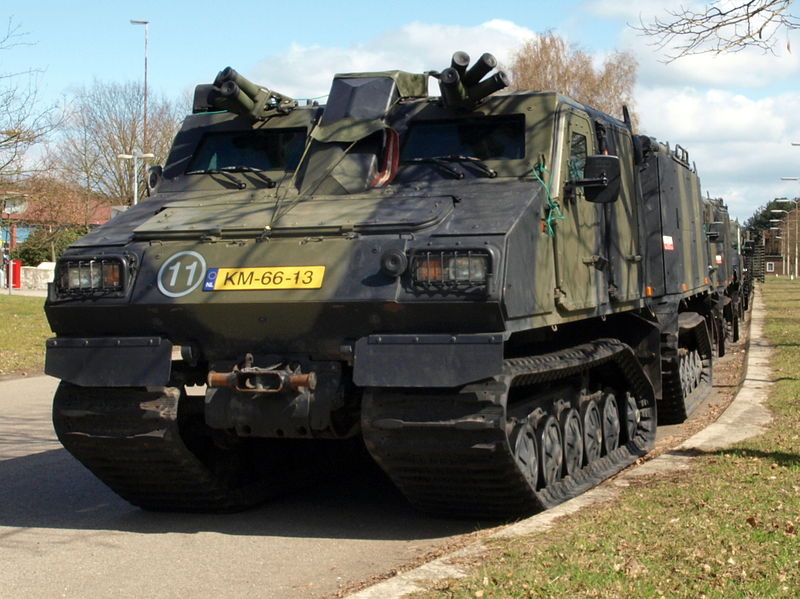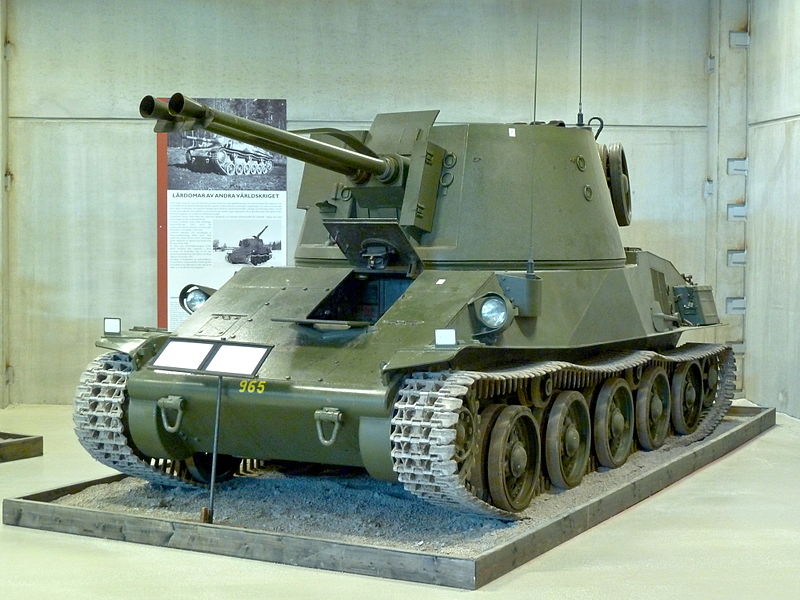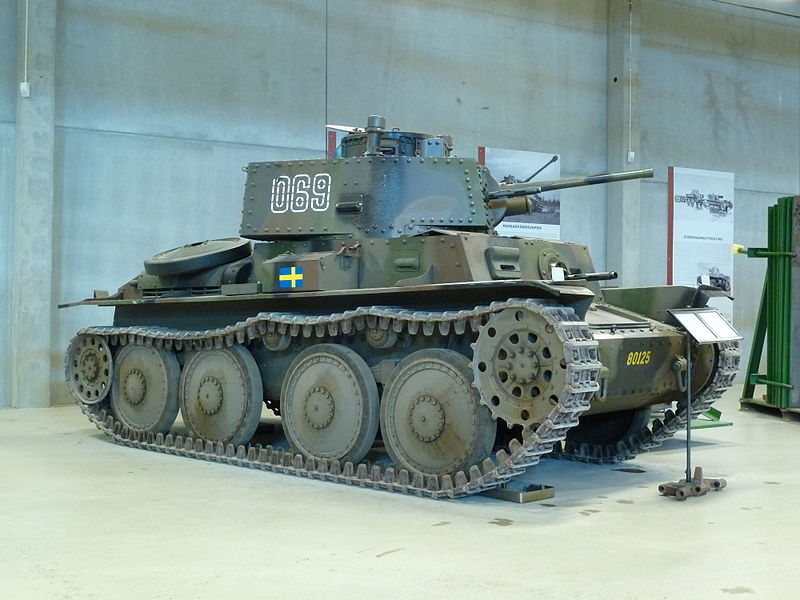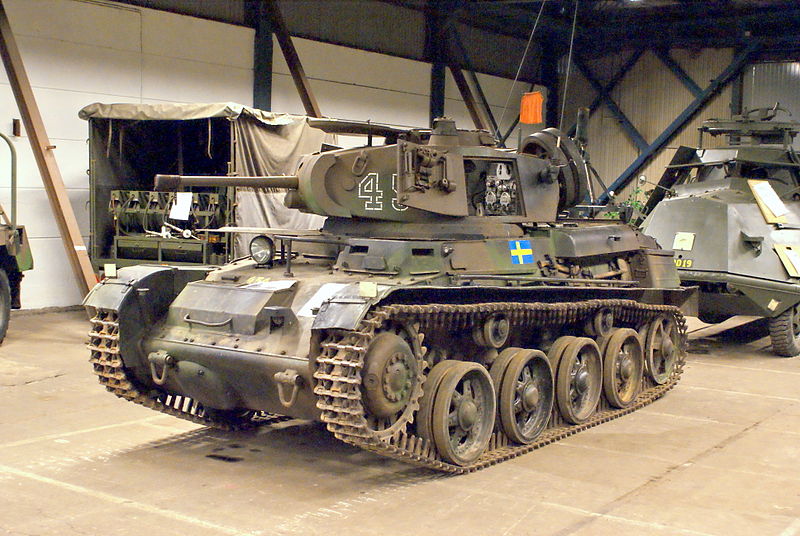The Cold War Swedish Army
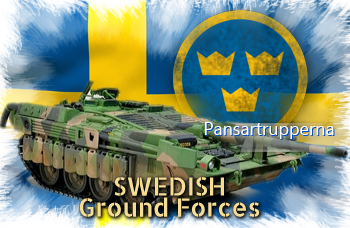 During the Cold War (1945–1991), Sweden maintained a policy of armed neutrality, which aimed to keep the country independent and self-sufficient in defense while avoiding alliances with either NATO or the Warsaw Pact. The Doctrine called for a Total Defense Strategy (Totalförsvaret) as Sweden prepared for a potential invasion from the Soviet Union, focusing on a defensive strategy that combined military defense, civil defense, and economic resilience. Tactically it relied on the Territorial Defense: Sweden's rugged terrain and dense forests were leveraged for guerrilla warfare and defensive operations.
During the Cold War (1945–1991), Sweden maintained a policy of armed neutrality, which aimed to keep the country independent and self-sufficient in defense while avoiding alliances with either NATO or the Warsaw Pact. The Doctrine called for a Total Defense Strategy (Totalförsvaret) as Sweden prepared for a potential invasion from the Soviet Union, focusing on a defensive strategy that combined military defense, civil defense, and economic resilience. Tactically it relied on the Territorial Defense: Sweden's rugged terrain and dense forests were leveraged for guerrilla warfare and defensive operations.
There was a system of Universal Conscription in place, with all Swedish men were required to undergo military training, ensuring a large and well-trained reserve force.
Its Mobilization Capability was considerable. Sweden could quickly mobilize hundreds of thousands of troops from its reserve forces in the event of a crisis. It was supported with a still experienced Local Arms Industry: Sweden developed its own weapons and equipment to maintain independence, including tanks like the Stridsvagn 103 (S-tank) and the Bofors artillery systems. It was completed by an Air Defense and Anti-Tank Weapons: The army was equipped with advanced anti-aircraft systems and anti-tank weapons to counter potential Soviet advances.
Another often overlook aspect is its reliance on fortifications and infrastructure. The country was dotted with Underground Bunkers and Coastal Fortifications, Strategic facilities and airbases built underground to survive nuclear attacks. In the air force, assets were dispersed and designed to operate from regular highways and to the road Network was Adapted for Military Use, with many emergency runways for aircraft and pre-located concrete, camouflaged single-plane hangars.
While being neutral, Sweden knew its leaning towards the west, and defiance with Moskow. Cooperation with the West, albeit Covertly, was evident. Despite official neutrality indeed, Sweden secretly cooperated with Western intelligence agencies and allowed U.S. and NATO forces to use Swedish airspace in case of a Soviet invasion.
It contributed with Intelligence and Surveillance, notably Signals Intelligence (SIGINT): Sweden developed sophisticated eavesdropping capabilities to monitor Soviet communications in the Baltic region. They took part in intense Submarine Tracking: The Swedish Navy and coastal defenses focused on detecting and tracking Soviet submarines in the Baltic Sea, acoustically referenced them, passed the information to NATO naval command. The Cold War-era experience laid the foundation for Sweden's current defense strategy, and much of the infrastructure and doctrine from that period remains relevant today. Since Sweden recently joined NATO, this is a new force multiplier.
Cold War Models
- Stvr-74
- Stvr-103
- Stvr-104
- Ikv-91
- Psbil-301
- Psbil-302
- Landsverk Unimog
- Stmvgn m/43
- Bofors SAV M43
- Pansarvarnkanonvagn m43
- Pansarvarnkanonvagn II/III
- Luftvärnskanonvagn fm/43
- (TE) proto Strv 2000 T140/40
WW2 Legacy
During World War II, Sweden maintained its policy of neutrality, but it still developed and produced tanks to defend its territory. Swedish tank production focused on indigenous designs due to limited access to foreign technology and materials. Notably its first assets were the Stridsvagn m/37, originally Based on the Czechoslovakian CKD AH-IV tankette with a 8 mm Kulspruta m/36 machine gun, 6-15 mm armor and used for Reconnaissance and infantry support with a Crew of 2, providing mobility for scouting missions. Next was the Stridsvagn m/38, m/39, m/40 series, also called the Landsverk L-60. They made the bulk of Swedish armoured brigades, with 37 mm Bofors cannon and machine guns, 8-24 mm armour, Crew of 3. They introduced torsion bar suspension and welded armor, influencing tank designs worldwide. here was in complement another Czech-based design, the Stridsvagn m/41 (Czech TNH) armed with the same 37 mm Bofors cannon and machine guns, 8-50 mm armour, crew of 4.Lastely there were several wartime programs preparing the country for a possible German invasion, still possible despite guarantees given by Hitler. The Stridsvagn m/42 was to be the core of these new units, a medium tank armed with a 75 mm Bofors cannon and machine guns, with a 15-55 mm armour and a crew of 4. It was Sweden's first medium tank, comparable to contemporary to the German Panzer IV. But in 1945 it was completely outpaced by the latest Soviet designs. This tank development focused on defending against potential invasions, particularly from Nazi Germany and from late 1945, the Soviet Union. Many projects were made but few designs were relalized in the postwar budget-restricted environment. Many WW2 legacy "recyclings" led to rather unique vehicles, such as APCs using former Stridsvagn m/41 chassis, or the completely modernized Stridsvagn 75.
The Cold War
In the new context of 1947, the soviet threat seemed even more real to Sweden which -although still neutral- tightened its relations with the West and NATO, although the country never joined the Atlantic organization. This neutrality was especially hard to maintain with such proximity to the USSR borders, especially in the Baltic. In fact it would have been nearly impossible to Sweden to not take sides in case of an open war between the two supergiants due to this strategic and geographic position.
The Swedish military was therefore more cautious to elaborate on scenarios of a soviet invasion to model its ground, air and naval assets as a whole. Even though on a political side, this position was more nuanced and these realist ties were maintained in a high secrecy level.
Its equipments were also from the western bloc -with a few exceptions- and therefore ammunitions standards, supplies and procedures were also NATO-oriented. One of the motive for such position was the alleged Soviet desire for a full military control and access to the North Atlantic, the cornerstone of the NATO defence, which necessarily passed through Scandinavia.
The Pansarbandvagn 301 in Strängnäs. This APC was a clever 1960s recycling of the old M/41 chassis.
1960 renewal
In the 1960s the Swedish ground forces could count on a small, well-equipped professional core and a large conscript army. However, almost all tanks and armoured cars still dated back then from ww2; Some, like the Terrangbil m/42D SKP was maintained into service until the 1990s while many old models were recycled or modernized. Two good examples of this were the Pansarbandvagn 301 (1961) and the Strv 74. The First was the first Swedish APC (Armoured Personal Carrier), based on the m/41 chassis while the second was a complete overhaul and modernization of the Strv 42, standard Swedish medium tanks of ww2.

The Stridvagn 104 MBT – Swedish Centurions, were the staple of the Swedish MBT force until their replacement in the 1980s by the Leopard 2.
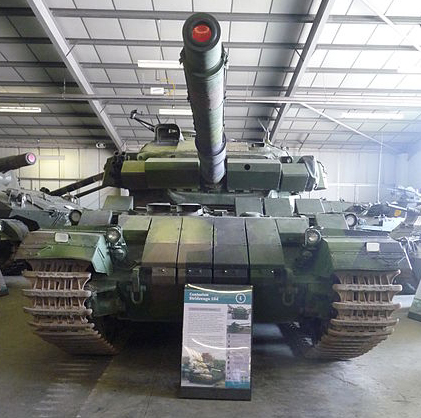
Strv 104 (late Centurion) kept at the Arsenalen, official Swedish tanks museum in Strängnäs. Notice the ERA blocks on the glacis plate.
However, these were never really up to the task and in the meantime, two new assets entered service as the Backbone of the armoured forces of Sweden : The British-built Centurion, 350 in all from several variants, locally denominated Strv 81, 101, 101R, 102, 102R and 104; and the Swedish-built, very special Strv 103.
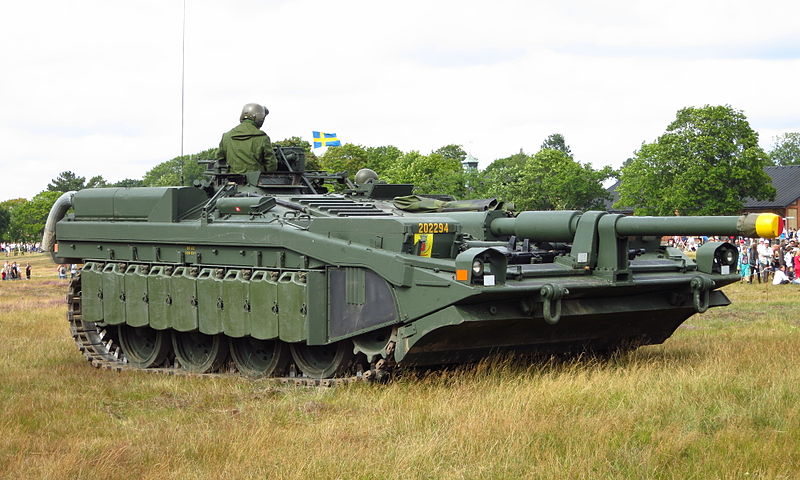
The Stridvagn 103 or “S-Tank” one of the cornerstone of the Swedish defence in the 1970s.
The latter, better known as the “S-tank”, was a marvel of Swedish ingenuity and a concentrate of innovations, meeting the Swedish operational conditions including the best use of the landscape in defensive tactics.
It was a self-propelled gun, with an autoloader, a dozer blade, propelled by a turbine and suspended by active hydraulic units which directly participated to the elevation/depression of the gun, for a very optimized, unmatched hull-down position. As said before, both vehicles relied on the NATO standard 105 mm, L7 gun.
.jpg)
The Stridvagn 121, Swedish version of the Leopard 2A4, in winter exercises.
1970-90
Due to its geographic particulars, Sweden long relied on a combination of strong coastal defence and a strong air force, but the land Forces received more attention in the early 1980s, with the introduction of the Leopard 2A4 (local designation Strv-121), replaced later by the Strv-122 or leopard 2A5 of which 120 are now constituting the bulk of the Armoured forces, along with the Bgbv 120 armoured recovery vehicle and the Pionierpanzer 3 Kodiak Combat Engineering Vehicle.
The 1970s Pansarsbandvagn 302 era APC were replaced recently by more modern AFVs and wheeled APCs like the Piranha III, but still, many are kept in second-line and reserve. Another interesting tank from the late 1970s and 1980s was the Infanterikanonvagn 91 which replaced previous tank hunters in service. It was a fast, sleek vehicle armed with a rapid-fire Bofors 90 mm cannon, of which 212 were delivered, retired from 1990 to 2002.
Volvo 13304 39 pansarvrnspjsterrngbil (credits gmotors.net)
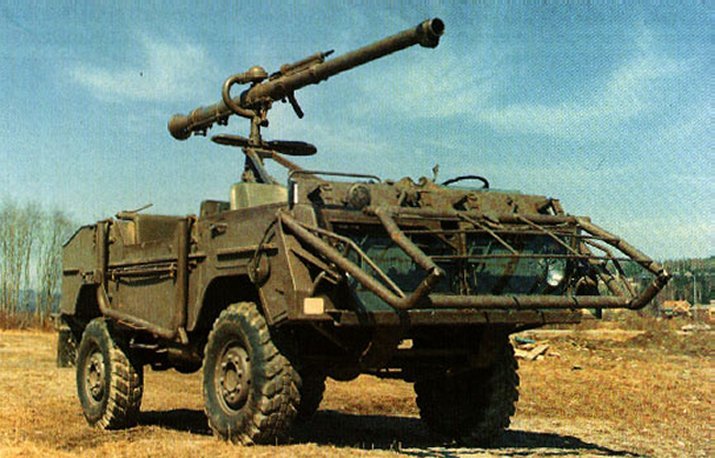
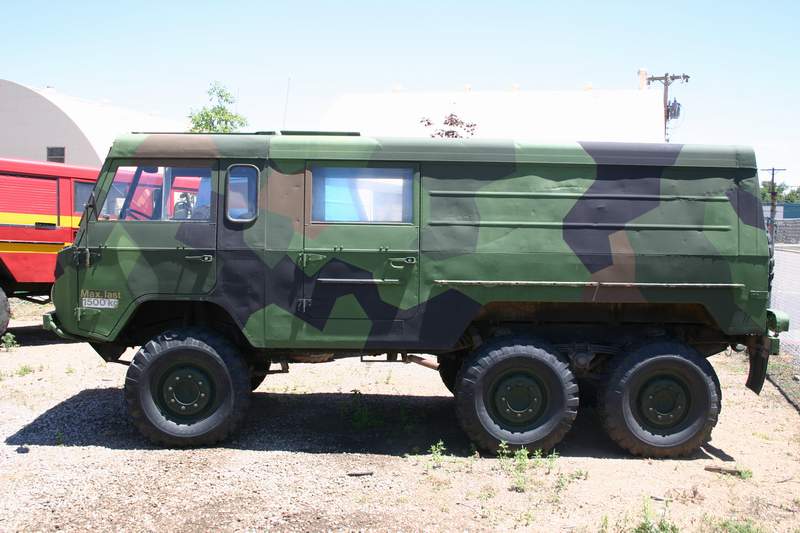

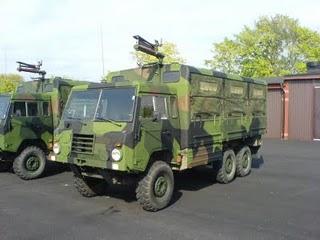
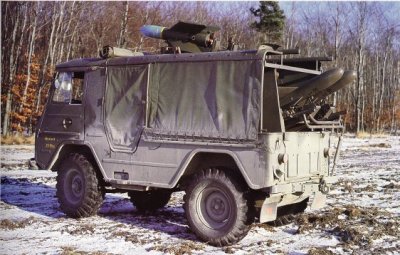
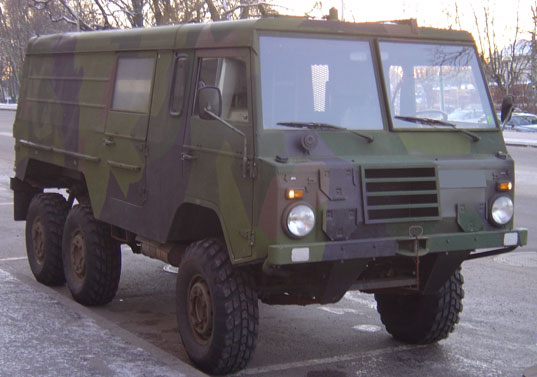
Terrängbil 13 Armoured Personal Carrier
Less costly than these Military hardware, Volvo produced thousands of 4×4 and 6×6 for the Swedish Army, declined into a multitude of variants. The 4×4 Pltgb 903 infantry truck for example had good off-road characteristics and was really the motorized do-it-all APC in the 1960-1970s, declined into communications vehicle, anti-tank vehicle and ATGM carrier. These were gradually replaced by the 6×6 versions derived from the Terrängbil 11, comprising infantry tricks, APCs, communications vehicles, ambulances, artillery spotters, and MANPADS carriers. The light Tgb 1111 was an interesting “gun jeep”, a fast, cost-efficient and low-profile 4×4 armed with a 105 mm recoiless rifle.

The Stridvagn 122, Sweden\’s actual MBT (licence-built from KMW with some modifications) -120 are currently in service.
.jpg)
The Stridvagn 121, Swedish version of the Leopard 2A4, in winter exercises.
But the great overall speciality of the Swedish Armour was its numerous types of snow crawlers, articulated tracked vehicles, particularly suited for deep snow as specialized “winter APCs”. This comprised the 1964 Bv-202 (5000 built), the 1980 Bv-206 (4500 built) which replaced it (now around only 50 in service), as well as the Swedish/British BvS 10 or the Finnish-built Patgb XA180, both few in numbers. The formula was derived from usual snow crawler used in these latitudes or in high mountain, and usually contained the forward cabin, large enough for 5-6 and the rear payload tracked trailer, and an articulated system in between.
Modern Armour
Like many other countries of the region, the end of the cold war signalled also large budget cuts in military spendings, and Sweden was no exception.
The swedish army took part in several joint military exercises after the end of the cold war and is an active member of the Nordic Battle Group, an UE defence Battlegroup specialized in winter exercises, of which a first edition took place in 2008 and another in 2011.
As of today, there are two regiments of infantry, the Life Guards (LG) stationed in Stockholm and the Norrbotten Regiment (I 19) stationed in Boden, one regiment and two battalions of cavalry (Life Hussars in Karlsborg and the Arméns Jägarbataljon in Arvidsjaur, the Stockholm Life Guards which also serves as MPs, one company of NBC warfare defence, the Armoured Corps or Pansartrupperna which counts three regiments of armoured/mechanized troops, at Skaraborg (Skövde), Revinge and Boden, one regiment of artillery in Boden, one regiment of anti-aircraft troops at Halmstad, one regiment of engineers at Eksjö (Gotland), a Signal Corps regiment and a Command and Control Regiment at Enköping, plus the Logistic Corps and Train Regiment in Skövde.
Here is the repartition of the military regions, according to the Militärområde (Milo) in the 1990s-2000s.
- Milo B, Bergslagens militärområde (Bergslagen Military Area)
- Milo M, Mellersta militärområdet (Middle Military Area)
- Milo N, Norra militärområdet (Northern Military Area)
- Milo NN, Nedre Norrlands militärområde (Lower Norrland Military Area)
- Milo Ö, Östra militärområdet (Eastern Military Area)
- Milo ÖN, Övre Norrlands militärområde (Upper Norrland Military Area)
- Milo S, Södra militärområdet (Southern Military Area)
- Milo V, Västra militärområdet (Western Military Area)
AT missiles
Infantry is equipped with various antitank weapons, the Grg m/48 recoiless rifle, the Pskott m/86 bazooka, the RB 57 AGM launcher, the fixed RBS 55/57 ATGW, and the RBS 70 MANPADS. Currently there is no helicopter force dependant of the Army for AT warfare, only transport ones for the Air Force, and the multi-purpose JAS 39 Gripen can be used with a variety of AT weapons range.
Peace-keeping operations
Due to its neutral position, the only interventions were limited to peace-keeping operations, which sometimes involved actual heavy fighting: In Congo in particular, during the Congo crisis of 1960–65, where the Swedish F 22 Kongo played its part, using Kp-Bils and Saab Tunnans against the rebel forces of Katanga. After the end of cold war, Swedish Soldiers showed their presence in Liberia, Democratic Republic of the Congo, Sudan, Ethiopia, Eritrea, Lebanon, Bosnia, Kosovo, Afghanistan, Kashmir, and Korea.
Links
Modern equipments of the Swedish army on Wikipedia
Official webpage (forsvarsmakten.se)
On Coldwarsites.net
Pansarmusem – Strängnäs Official website.
Pansarmusem – Strängnäs (personal page)
Surviving armoured cars of neutral states (pdf)
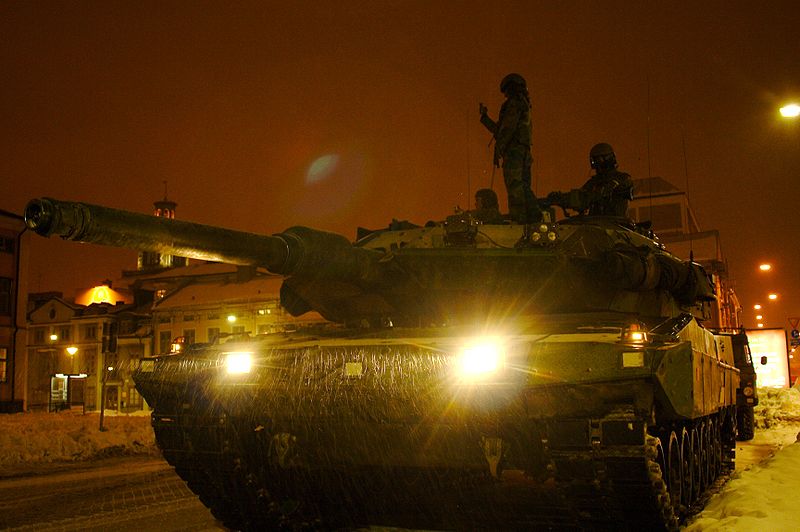
Swedish Strv 122, actual main battle tank – 120 are currently in service.
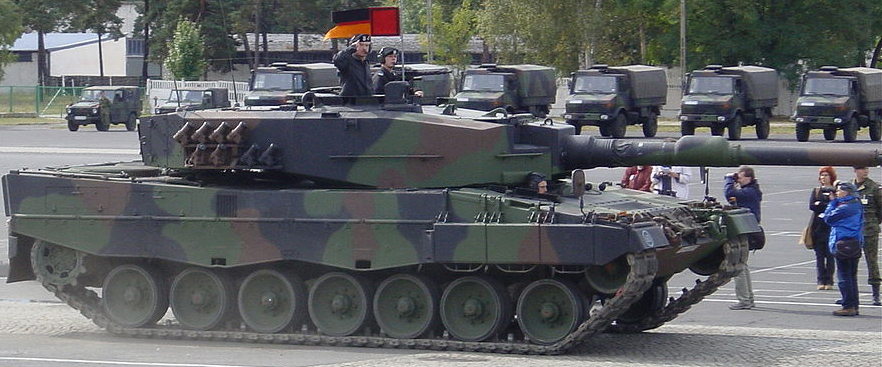
Swedish Strv-121/Leopard 2A4
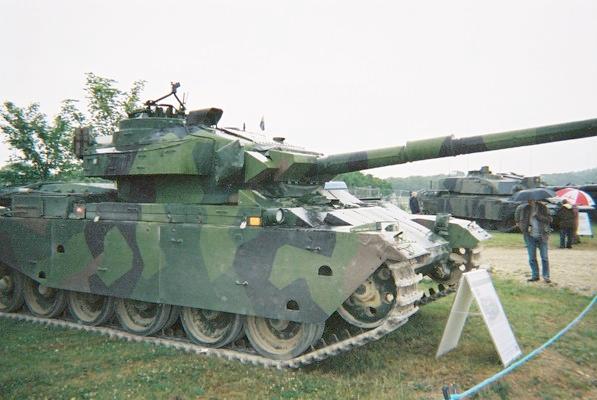
Stridsvagn 81, 101 or 101R, the early centurion in Swedish service. In total 350 were in service in the 1960-80s.
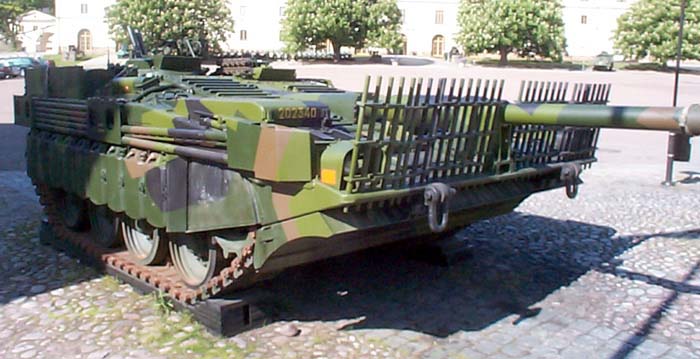
Stridsvagn 103, or “S-tank”, the most remarkable Swedish tanks ever built.
The BAE Systems Hägglunds AB Combat Vehicle 90 is a family of IFVs that forms the conerstone of the Swedish Armour Force today.
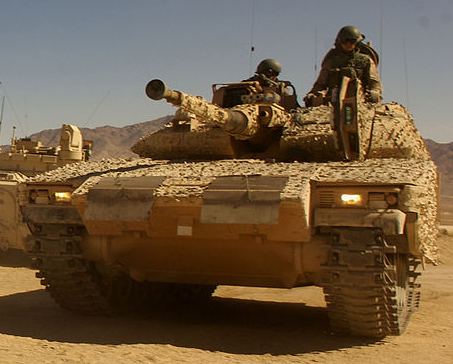
CV 90 training in California, prior to the Afghan Intervention.
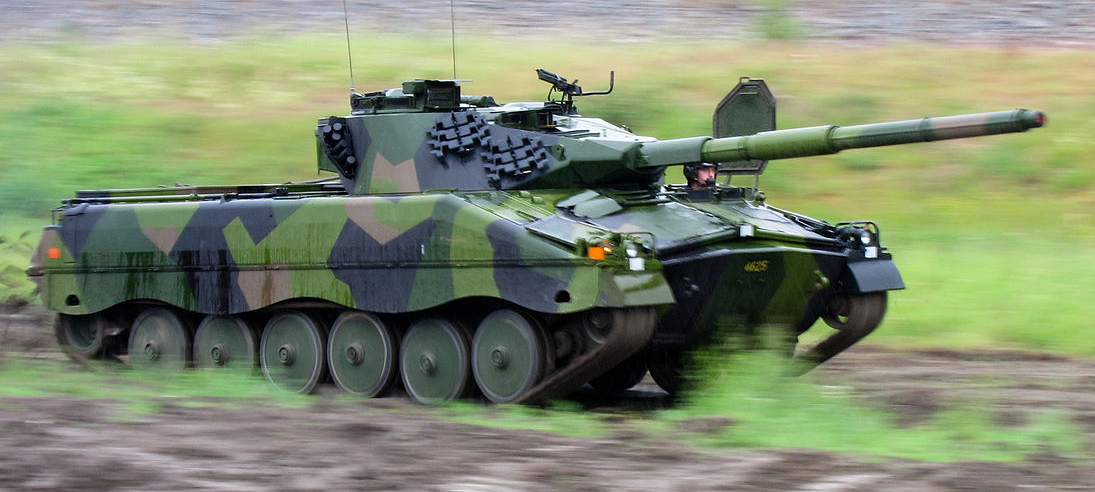
Infanterikanonvagn 91, light tank destroyer, another remarkable Swedish tank of the 1980s.
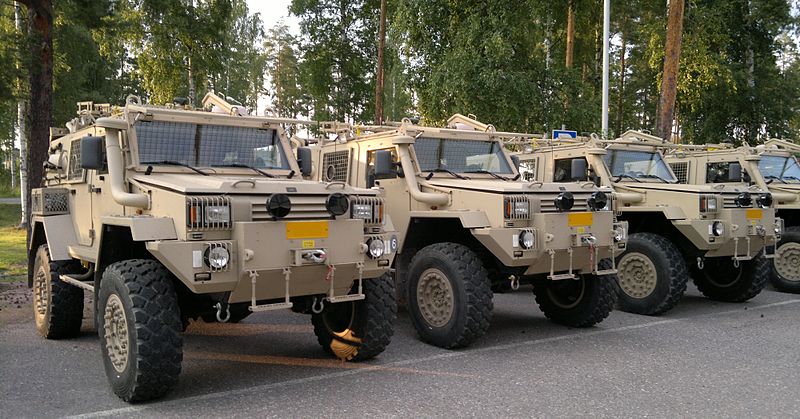
RG-32 Scout MRAPS (derived from the SADF RG-32 Nyala) also used in Afghanistan.
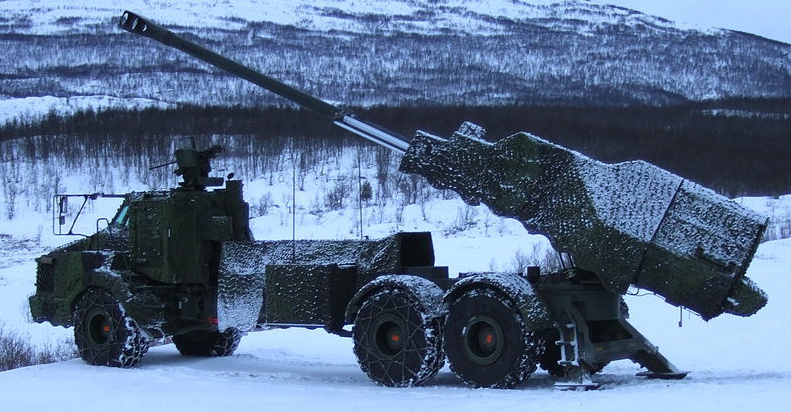
Archer heavy self propelled artillery system in action. The Panzerhaubitze 2000 was also tested.
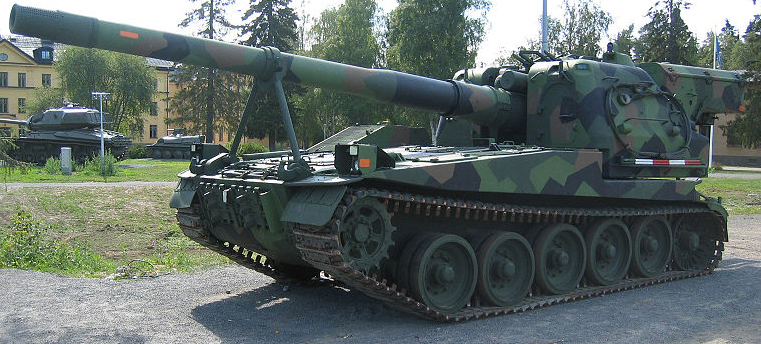
The Bandkanone 1 155 mm tracked SPG. 26 were in service from 1967 to 2003.
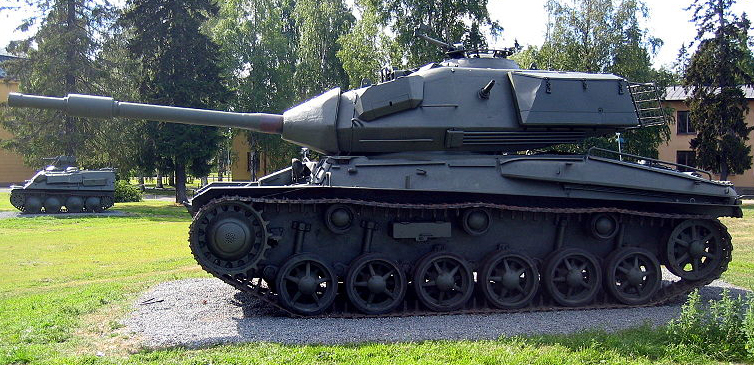
Stridvagn 74, the modernized version of the ww2 Strv m/43. 659 were in service from 1958 to 1983
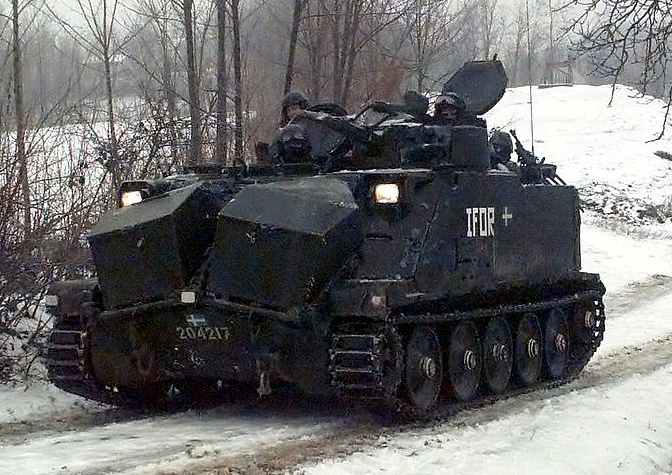
Hägglunds PVB 302 APC (over 650 built 1966-71) of which 50 are still in service today – here in Bosnia, 1996. now replaced by the CV 90.
Hägglunds Viking BV S10 Command unit
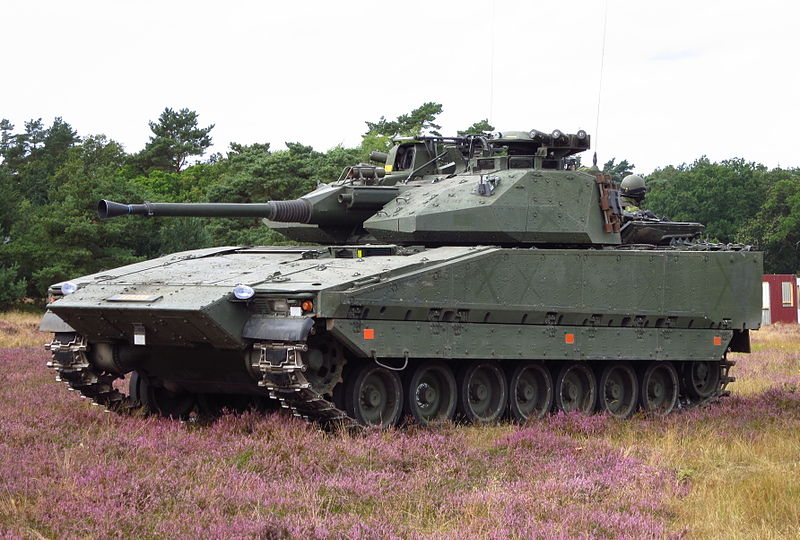
Modernized CV-90, testing at Stridsfordon in 2012
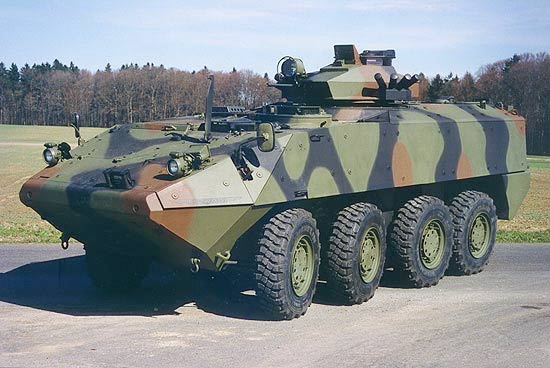
Swedish Piranha 3 wheeled APC. About 200 were in service (now retired).
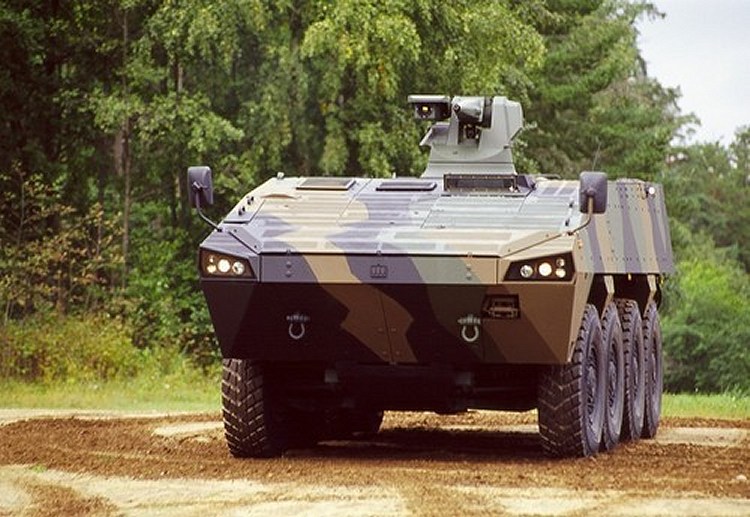
Patria AMV, a Finnish APC – about 183 in service.
Pansarbandvagn 301 at Hässleholm.
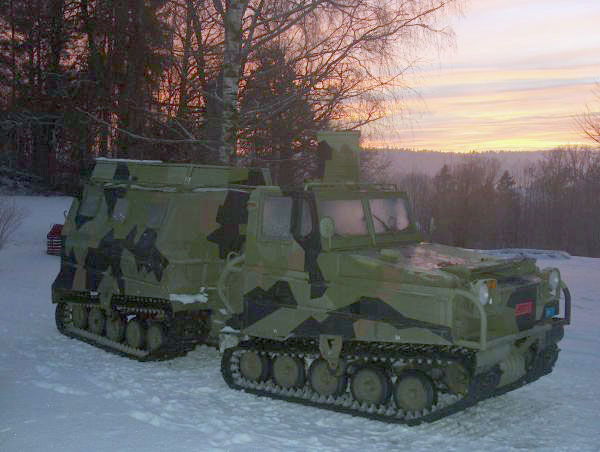
BV 202 NF1
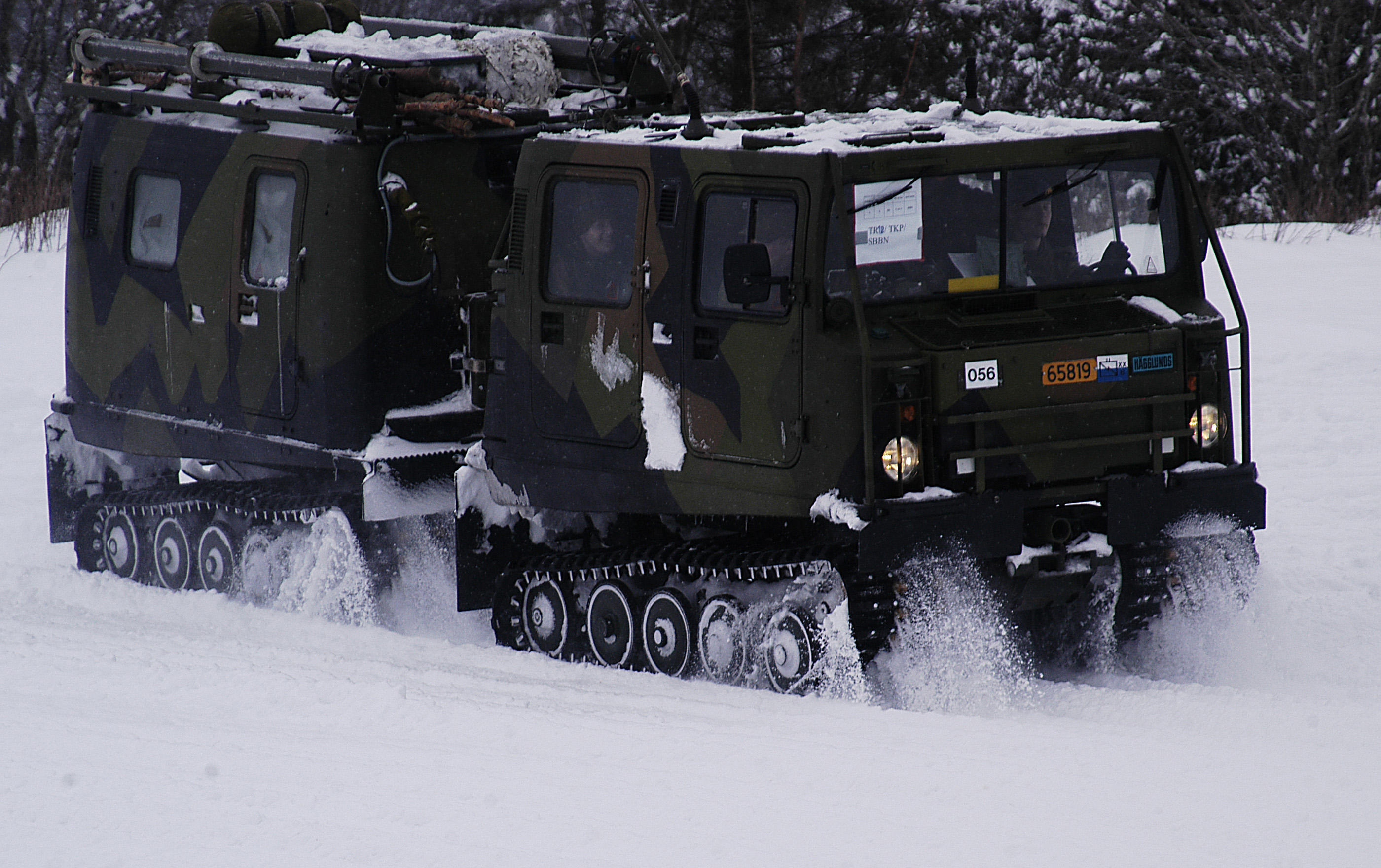
Norwegian BV-206
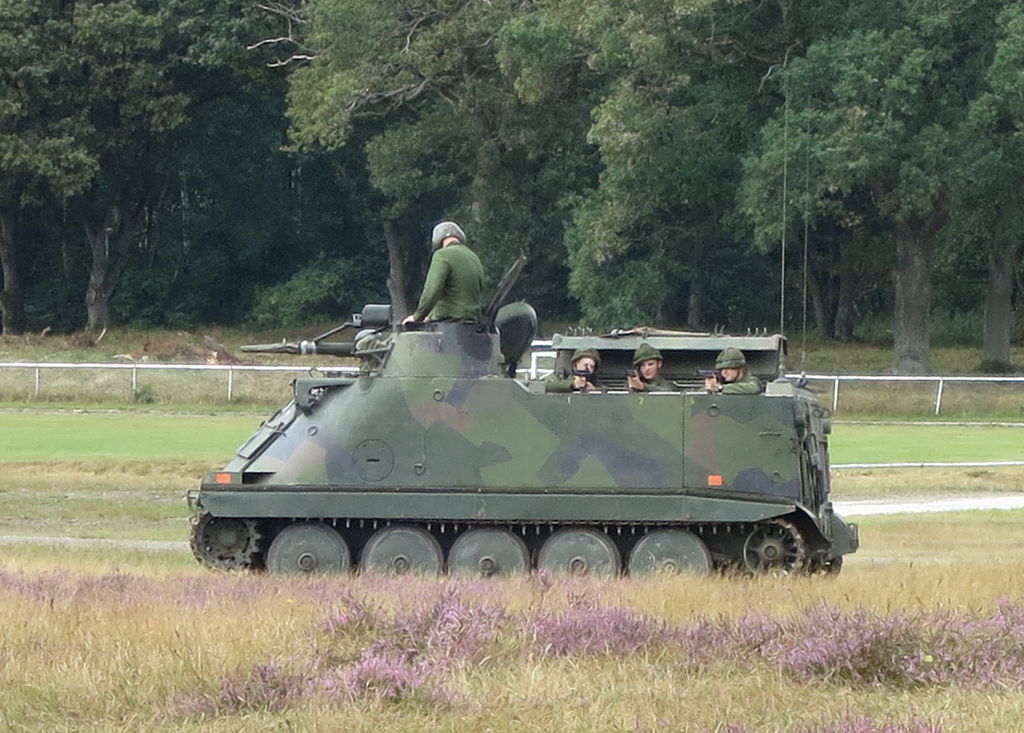
Pansarbandvagn 302 APC in Revinge
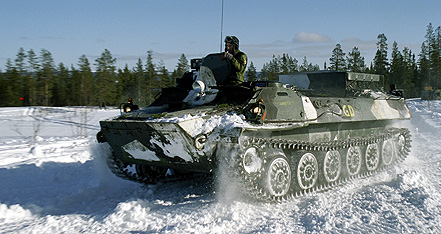
Pvb 401 in winter. About 460 MT-LBs were obtained in 1993 from surplus of the Soviet Union, only 147 were retained in active service by 2011, sold to Finland. Along these, 38 Pbv 4020 are kept in service, as well as 12 Stripbv 4021 Command vehicles, 10 Sjvpbv 4024 Medevacs and ? Pvrbbv 452 ATGM carrier.
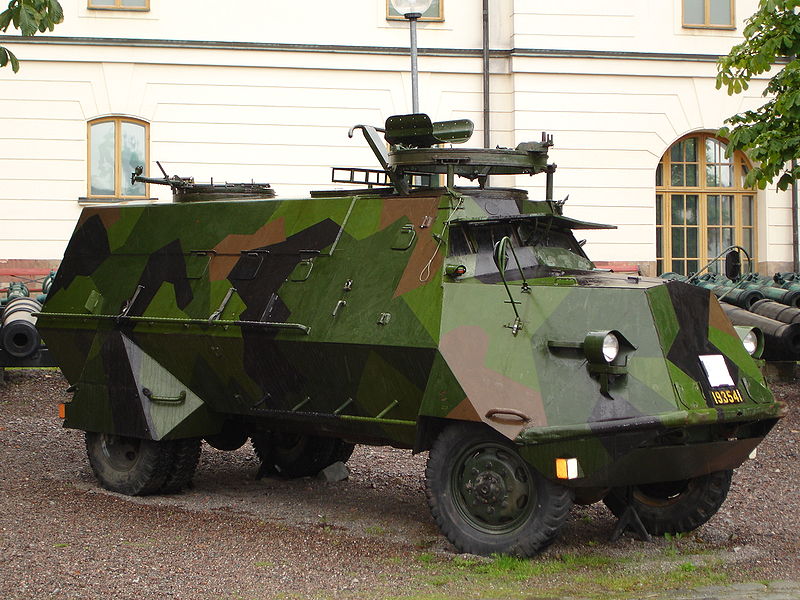
KP-Bil at the Stockholm Army Museum. This 1942 vehicle remained in service until the 1990s.
Luftvärnskanonvagn fm/43 SPAAG in Strängnäs
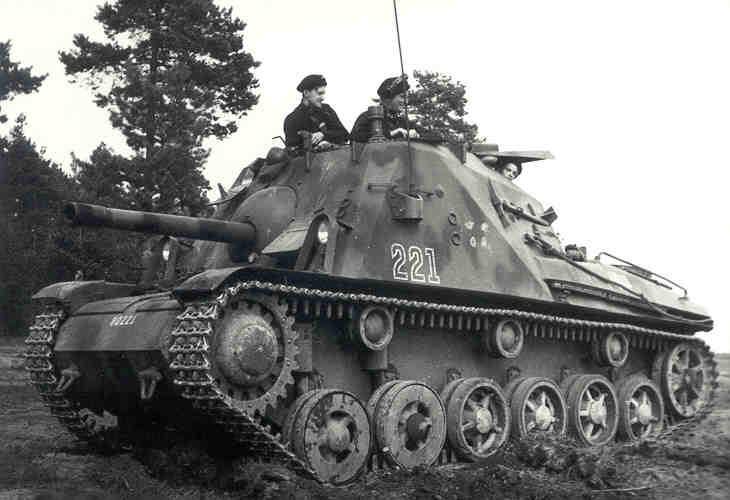
Pvkv-9 m/43 tank hunter
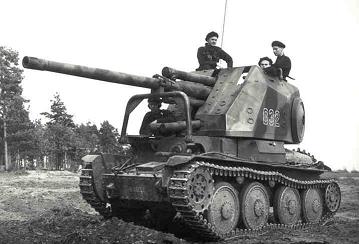
Pvkv-9 II m/43 tank hunter
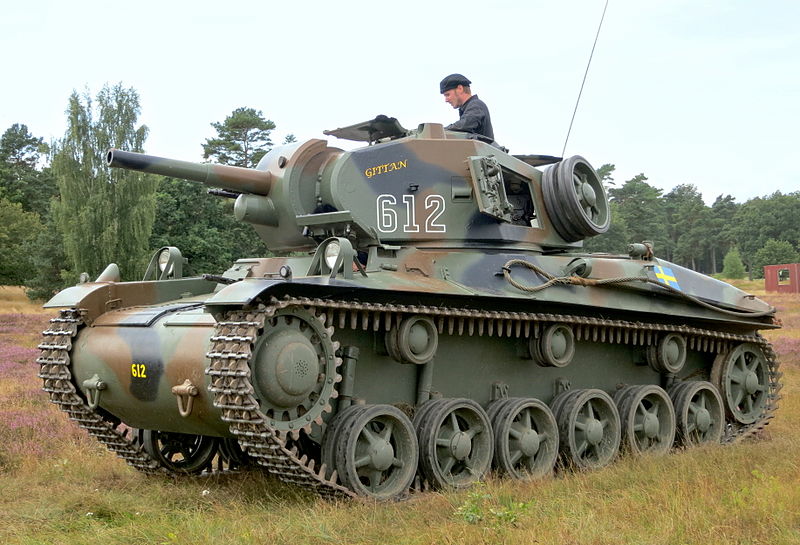
Stridsvagn 301 m/42 at Revinge in 2012. This was the main ww2 swedish medium tank.
The stridsvagn m/41 was of Czech design, but built in Sweden. It formed almost the third of ww2 swedish tanks.
Stridsvagn m/40K in Hässleholm. The L60 was the first tank to use torsion bar suspensions.
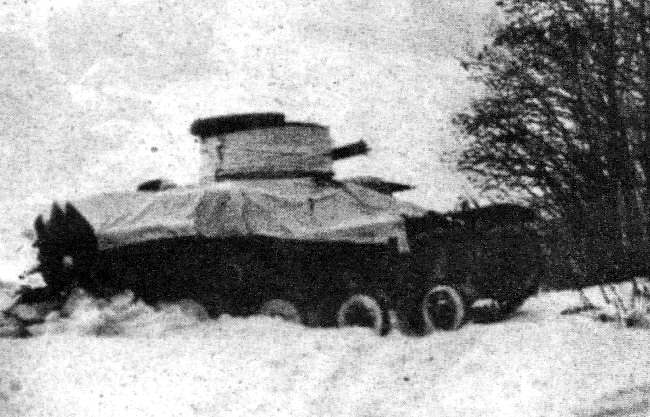
The rare “Risktanken” or L-120, the unique Norwegian tank built by AB Landsverk in 1936.

Cold War Tanks


































Cold war tanks posters

Cold War Main Battle Tanks

Cold War Soviet Army
Museums, Movies, Books & Games
The Tanks and Armor in pop culture
Tanks and armored vehicles in general are only really grasped when seen first person: The mass, the scale, it's all there. Explore also the way tanks were covered in the movie industry, in books and in video games.Movies:
Best tanks movie on warhistoryonline.com
On imdb.com
On bestsimilar.com/
miltours.com
liveabout.com/
watchmojo.com
Video Games:
pcgamesn.com
historyhit.com
levvvel.com
vg247.com/best-tank-games
mmobomb.com/
alienwarearena.com


